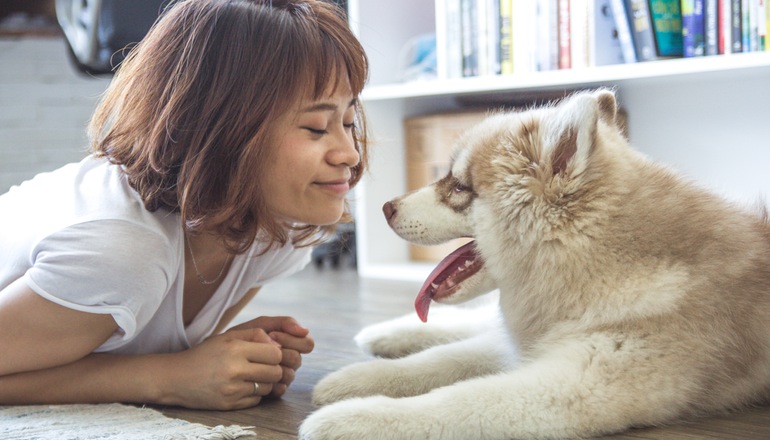We’ve always had dogs, but we were always a one-dog-at-a-time family. Shortly after adopting our third child, who came to us at 10 years old, I found myself face to face with a puppy in need of a home.
“I’m not sure if I’m ready for another dog,” I whispered to my friend, who had arranged the meeting. Despite my qualms, my mind was made up. As I followed the puppy around the yard in the bright, fall sun, I realized that I was delighted. The pup was perfect — a mixed breed, calm, and going to be big. Her age was unknown, but, from the way she suckled my finger, I guessed her to be about six weeks old. I nuzzled her soft neck and felt her heart thumping, quick and marvelous.
Although this was nothing I’d planned for, luckily, serendipity intervened. The addition of a second dog to our household proved to be an ideal way to help our newest child merge into our family.
When a child is brought into a family, especially a child adopted at an older age, she is the new piece in an established unit. On her first day home with us, our new daughter walked through the house, counting shoes in the closet, books on the shelves, taking stock of the kids’ artwork scattered around. After each assessment, she wanted to know what belonged to whom, and how many did each have.
In the kitchen, she scanned the cups in the cupboard, and requested the yellow one. When her eyes fell on the oatmeal boxes that the kids had decorated with purple tissue paper and gold beads, she asked if I had another box, anxious to add her own creation to the display. Finally, with intelligent, worried eyes, she demanded to know why was there only one photograph of her on the refrigerator door, but so many of her newly acquired brother and sister?
I don’t generally claim to be wise or filled with insight, but this time I was. Moments after bringing our new puppy home, I understood that raising this dog would begin to create a history for our new daughter, would lodge her firmly within our family. A family pet conjures notions of family ties, of belonging. On an equal footing, my husband and I, my son and two daughters, all watched the newest doggy member of our family, Sadie, learn that dog biscuits come from the pantry, that crackers are a wonderful thing, that you can tell when somebody is getting one because the paper inside the box crinkles, and that he or she might give you one if you sit nicely.
Each week, as a family, we took our new puppy to canine kindergarten classes, then on to novice training. At home and on neighborhood strolls, we took turns walking Sadie on the leash, coaxing her to “sit” and “stay.”
We missed out on our third child’s early years, before her adoption. We arrived in time to jump into what was left of her middle childhood. When Sadie won first place in novice training, my new daughter breathed a deep, contented sigh. Her place in our family was no longer invisible. Having a hand in raising this dog somehow compensated for all the things in our past that she had not shared in. She hugged the blue ribbon to her chest and squealed, “We all helped to train her, even me.”



